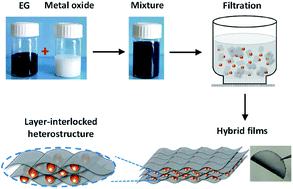当前位置:
X-MOL 学术
›
Faraday Discuss.
›
论文详情
Our official English website, www.x-mol.net, welcomes your feedback! (Note: you will need to create a separate account there.)
Facile assembly of layer-interlocked graphene heterostructures as flexible electrodes for Li-ion batteries
Faraday Discussions ( IF 3.4 ) Pub Date : 2019-12-6 , DOI: 10.1039/c9fd00120d Gang Wang 1, 2, 3, 4, 5 , Guangbo Chen 1, 2, 3, 4, 5 , Sheng Yang 1, 2, 3, 4, 5 , Panpan Zhang 1, 2, 3, 4, 5 , Faxing Wang 1, 2, 3, 4, 5 , Ali Shaygan Nia 1, 2, 3, 4, 5 , Minghao Yu 1, 2, 3, 4, 5 , Xinliang Feng 1, 2, 3, 4, 5
Faraday Discussions ( IF 3.4 ) Pub Date : 2019-12-6 , DOI: 10.1039/c9fd00120d Gang Wang 1, 2, 3, 4, 5 , Guangbo Chen 1, 2, 3, 4, 5 , Sheng Yang 1, 2, 3, 4, 5 , Panpan Zhang 1, 2, 3, 4, 5 , Faxing Wang 1, 2, 3, 4, 5 , Ali Shaygan Nia 1, 2, 3, 4, 5 , Minghao Yu 1, 2, 3, 4, 5 , Xinliang Feng 1, 2, 3, 4, 5
Affiliation

|
Flexible electrodes with robust mechanical properties and high electrochemical performance are of significance for the practical implementation of flexible batteries. Here we demonstrate a general and straightforward co-assembly approach to prepare flexible electrodes, where electrochemically exfoliated graphene (EG) is exploited as the film former/conducting matrix and different binary metal oxides (Li4Ti5O12, LiCoO2, Li2MnO4, LiFePO4) are incorporated. The resultant EG–metal oxide hybrids exhibit a unique layer-interlocked structure, where the metal oxide is conformably wrapped by the highly flexible graphene. Due to numerous contact interphases generated between EG and the intercalated material, the hybrid films show high flexibility and can endure rolling, bending, folding and even twisting. When serving as the anode for Li-ion batteries, the freestanding EG–Li4Ti5O12 hybrid presents a characteristic flat discharge plateau at 1.55 V (vs. Li/Li+), indicating transformation of Li4Ti5O12 to Li7Ti5O12. Small polarization, high rate capability and excellent cycling stability against mechanical bending are also demonstrated for the prepared EG–Li4Ti5O12 hybrid. Finally, full cells composed of EG–Li4Ti5O12 and EG–LiFePO4 hybrids show impressive cycling (98% capacity retention after 100 cycles at 1C) and rate performance (84% capacity retained at 2.5C). The straightforward co-assembly approach based on EG can be extended to other two-dimensional layered materials for constructing highly efficient flexible energy storage devices.
中文翻译:

方便地组装层互锁的石墨烯异质结构作为锂离子电池的柔性电极
具有坚固的机械性能和高电化学性能的柔性电极对于柔性电池的实际实施具有重要意义。在这里,我们演示了一种通用而直接的组装方法来制备柔性电极,其中电化学剥落的石墨烯(EG)被用作成膜剂/导电基质和不同的二元金属氧化物(Li 4 Ti 5 O 12,LiCoO 2,Li 2 MnO 4,LiFePO 4)。所得的EG-金属氧化物杂化物表现出独特的层互锁结构,其中金属氧化物被高柔性石墨烯保形包裹。由于在EG和插层材料之间产生大量接触界面,因此杂化膜显示出很高的柔韧性,并且可以承受滚动,弯曲,折叠甚至扭曲。当用作锂离子电池的阳极时,独立式EG–Li 4 Ti 5 O 12混合动力电池在1.55 V(相对于Li / Li +)下表现出典型的平坦放电平稳期,表明Li 4 Ti 5 O 12转变为锂7钛5 O12。制备的EG-Li 4 Ti 5 O 12杂化材料还显示出小极化,高倍率性能和出色的抗机械弯曲循环稳定性。最后,由EG–Li 4 Ti 5 O 12和EG–LiFePO 4杂化物组成的全电池显示出令人印象深刻的循环性能(在1C下100次循环后,容量保持率达到98%)和速率性能(在2.5C下,容量保持率达到84%)。基于EG的直接组装方法可以扩展到其他二维分层材料,以构造高效的柔性能量存储设备。
更新日期:2019-12-06
中文翻译:

方便地组装层互锁的石墨烯异质结构作为锂离子电池的柔性电极
具有坚固的机械性能和高电化学性能的柔性电极对于柔性电池的实际实施具有重要意义。在这里,我们演示了一种通用而直接的组装方法来制备柔性电极,其中电化学剥落的石墨烯(EG)被用作成膜剂/导电基质和不同的二元金属氧化物(Li 4 Ti 5 O 12,LiCoO 2,Li 2 MnO 4,LiFePO 4)。所得的EG-金属氧化物杂化物表现出独特的层互锁结构,其中金属氧化物被高柔性石墨烯保形包裹。由于在EG和插层材料之间产生大量接触界面,因此杂化膜显示出很高的柔韧性,并且可以承受滚动,弯曲,折叠甚至扭曲。当用作锂离子电池的阳极时,独立式EG–Li 4 Ti 5 O 12混合动力电池在1.55 V(相对于Li / Li +)下表现出典型的平坦放电平稳期,表明Li 4 Ti 5 O 12转变为锂7钛5 O12。制备的EG-Li 4 Ti 5 O 12杂化材料还显示出小极化,高倍率性能和出色的抗机械弯曲循环稳定性。最后,由EG–Li 4 Ti 5 O 12和EG–LiFePO 4杂化物组成的全电池显示出令人印象深刻的循环性能(在1C下100次循环后,容量保持率达到98%)和速率性能(在2.5C下,容量保持率达到84%)。基于EG的直接组装方法可以扩展到其他二维分层材料,以构造高效的柔性能量存储设备。



























 京公网安备 11010802027423号
京公网安备 11010802027423号